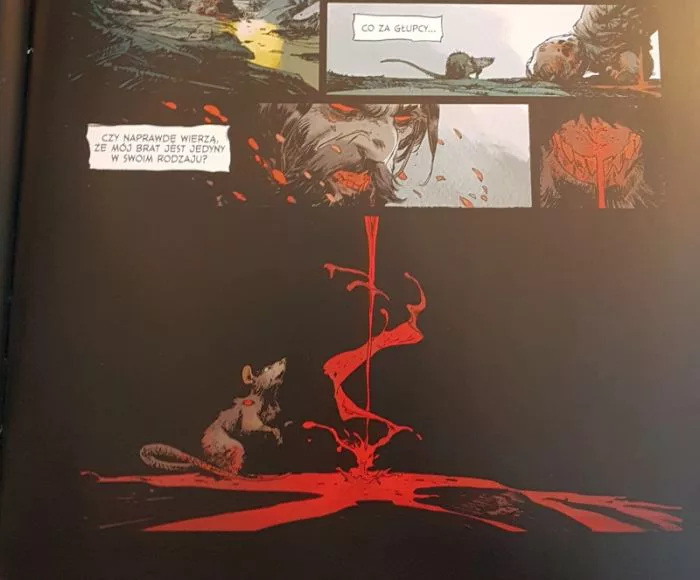Prequels are a very specific phenomenon. Since the recipient has already familiarized himself with the original and knows how it ends, why add what happened before? Fabien Nury is not afraid of this question, thanks to which the Legion comic book was created . Chronicles telling about the beginnings of the vampire conflict between two brothers.
Legion. Kroniki prides itself on belonging to the category of prequels, which are better than the originals. The previous story from this universe ( I am the Legion ) was forbidden to recombine. The most interesting element – i.e. vampirism, according to which Dracula and his brother Radu took over the bodies and consciousness of their victims with blood – was crushed by a mass of much more clichéd threads and uninteresting characters. The second installment of the series corrects this mistake by turning the monstrous siblings into the main characters.
Chronicle of the world
However, Nury did not completely abandon narrative combinatorics. In Kroniki there are not only jumps between different heroes and countries, but almost the entire globe becomes the arena of action. Over the course of several centuries. At the same time, all of this is clearer than in the original I Am Legion. The comic is a combination of many plot axes describing the centuries-old rivalry between the brothers. The first plot focuses on the genesis of the vampirism of Dracula and Radu and takes place in Transylvania (and in flashbacks in the Ottoman Empire). Unfortunately, explaining the incredible powers that striga possesses in this world is quite a disappointment. Also, the beginnings of a sibling conflict are poorly motivated. Both threads have been neglected and raise more questions than they answer. It’s better next. The remaining episodes take the reader to South America during the conquest, Napoleonic invasions of Russia and Romania, and Great Britain during the industrial revolution.

Chronicle of history
This starting point is the strongest point of the comic. Over the centuries, vampires had to take over the bodies of people of different sexes and social status. Dracula’s victims, including Gabriella de la Fuente (wife of Hernan Torres), Hussar captain Armand Malachi, and Croesus Byron Cavendish, allowed him to live comfortably and indirectly control the little ones. At the same time, Radu, who had vengeance to survive, was far less picky – spending many years in the bodies of rats. The first-person narrative works great here, as it allows you to better emphasize this difference. Thanks to Nura’s internal monologues, he shows that taking over the bodies has an impact on the vampire himself, because some of the consciousness and memories still remain in the victim and are responsible for the actions of the brothers.Legion.
However, I have the impression that while the individual historical lines are interestingly written and multi-threaded, they do not quite make up a coherent whole. Some decisions made by vampires in later ages do not seem to be properly motivated in earlier scenes. Unfortunately, the element that has not improved is the ending – again, as if the scriptwriter did not have an idea how to sum up all the previous events.

Illustrated Chronicle
Additionally, all these timelines are told in a non-chronological order. Moreover, although the original comic was published in four notebooks, each of them was intertwined with events from different ages. Such a combination, however, does not cause a headache, due to one procedure, which is the most interesting aspect of the comic – each plot is led by a different cartoonist. This is how: Mathieu Lauffray (known from Long John Silver, here responsible for the prologue), Mario Alberti (conquest times), Zhang Xiaoyu (Napoleonic era), Tirso (history in England) and Eric Henninot (illustrating the brothers’ metaphorical chess duel). Each of them has such a different line that the reader has no problem finding between the individual threads. Thanks to this, it is more than just a formal procedure. The Polish hardback edition should also be praised, with an afterword explaining the backstage of this complicated undertaking.

Chronicle of the End
Sequels say that their recipe for success should be to serve the same as in the original, but in twice as much. Apparently, this adage applies to the prequels as well. The second approach of Fabien Nury to the vampire conflict allowed the writer to correct old mistakes and create a very pleasant comic book.

